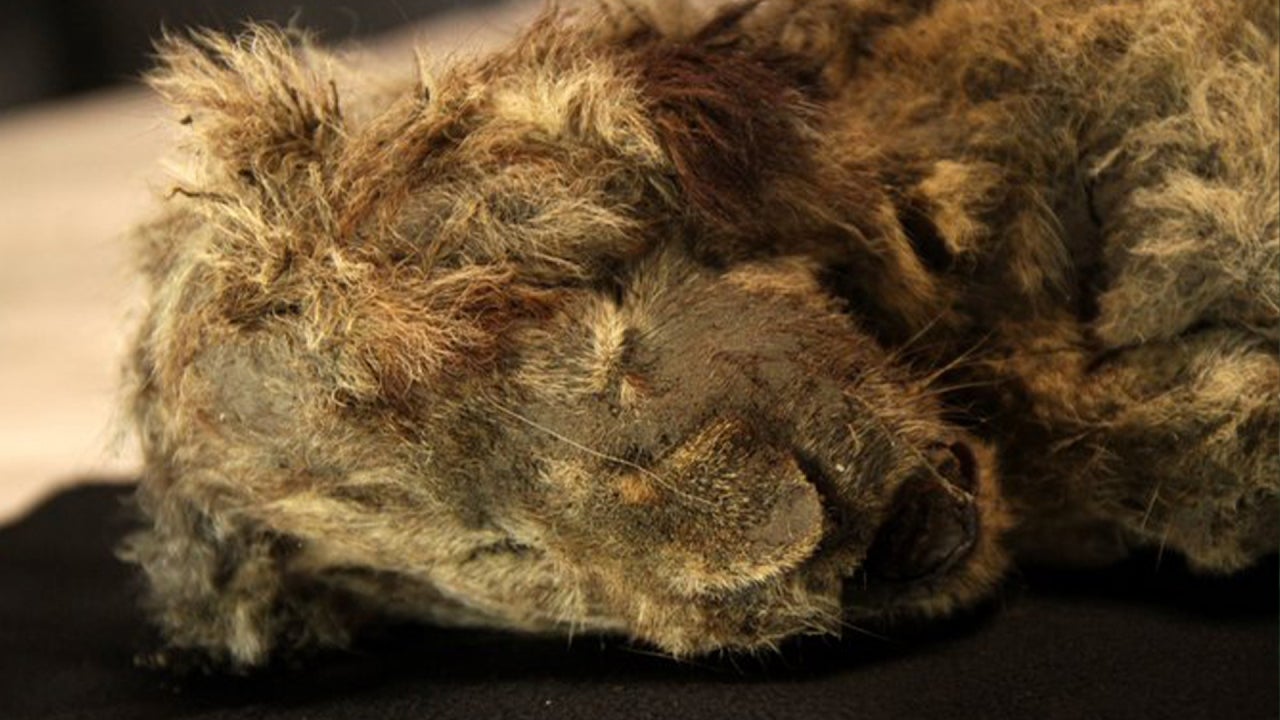Five hundred miles north of the Arctic Circle, in a bitter wintertime gale, a staff of reindeer collapsed with exhaustion on the Siberian tundra. It was midwinter 1914. The sun experienced not risen for weeks the air was hazy with diamond-challenging snow. A furclad determine pulled her numb legs out of a buckskin bag, then struggled to get off her wooden sled as her guideline admitted they had been misplaced. Chilled and starving, Maria Czaplicka fantasized about killing 1 of the reindeer so that she could drink its warm, nourishing blood. She wondered if there was any hope of acquiring her purpose: to make speak to with the Tungu individuals, acknowledged right now as Evenks—nomadic reindeer-herders who had by no means satisfied a European female.
Czaplicka is one particular of 5 fascinating, intrepid women of all ages pulled from the shadows of historical past by Frances Larson in “Undreamed Shores: The Hidden Heroines of British Anthropology.” Ms. Larson is an honorary study fellow in anthropology at Durham University in England. Just after completing her doctorate, she was a study associate at Oxford University’s Pitt Rivers Museum, household of an amazing archaeological and anthropological collection. The museum was proven in 1884, and a problem set by its benefactor, Gen. Augustus Henry Lane-Fox Pitt-Rivers, was that the college ought to appoint a lecturer in the new science of anthropology.
Undreamed Shores
By Frances Larson
Granta, 337 web pages, $25.99
What to Browse This 7 days
In the weeds with Napoleon Bonaparte the sharp comic fiction of Laurie Colwin the designer who transformed the present day office environment an author’s nightmare from Laura Lippman and far more.
The discipline’s male founders ended up keen to chart and categorize the world’s cultures. At first, these museum-primarily based anthropologists relied on travelers’ stories and letters from missionaries for particulars of “primitive” people’s beliefs, ceremonies, appearance, homes, foods and artifacts. They rarely thought it important to shell out time with the persons they examined. But once anthropology grew to become a college course with its own lecturer, it required learners. Those pupils would enable improve the way that anthropological exploration was done.
As a new program, the anthropology diploma was extra available to ladies than the established packages ended up. Between 1907 and 1918, 27 women of all ages (in comparison with 103 gentlemen) registered, becoming a member of the couple hundred gals studying at Oxford in the early 20th century who were scarcely acknowledged by their male peers and who could attend lectures only in chaperoned functions and on issue of silence. They ended up anticipated, Ms. Larson tells us, to be “peripheral, clerical and grateful.” The five ladies of “Undreamed Shores” overcame these attitudes and turned Britain’s very first feminine anthropologists, attaining groundbreaking research in some of the most distant corners of the world.
Katherine Routledge, the daughter of a North England industrialist, commissioned her own boat and sailed to Easter Island, in the South Pacific, 1 of the most isolated communities in the planet. There she compiled the very first systematic map of the great stone statues that covered the island. Barbara Freire-Marreco, from a at ease and typical center-class home in Surrey, labored and lived in the adobe pueblos of New Mexico and Arizona. She immersed herself, as no male anthropologist could have accomplished, in the get the job done envisioned of females in individuals communities—maize-husking, needlework, the getting ready of common medicines—even as their way of lifetime was eroded by white settlers. Polish-born Czaplicka trekked 3,000 miles via the Siberian winter to discover the traditions of hunters who invested a great deal of the calendar year in darkness. She noticed a society in flux, changed endlessly in 1904 by the completion of the Trans-Siberian Railway. Winifred Blackman, from a genteel but impoverished Anglican vicar’s family, invested 19 seasons residing with the agricultural peasants of Higher Egypt. Fights amongst villages were being typical, and her most reputable guidebook was murdered. But in its place of fleeing from these conflicts, she dodged about, producing notes and taking photographs. Beatrice Blackwood, the one-minded eldest youngster of a widow, traveled into the unmapped jungles of New Guinea. She also satisfied, and heartily distrusted, the reigning star of feminine anthropologists, Margaret Mead.
These women of all ages would have preferred to be remembered for their specialist achievements on your own, but, as Ms. Larson writes, “before they have been adventurers and intellectual pioneers, they were gals, and as females they faced entrenched prejudice and constraint at just about every change.” As opposed with their male peers, most of them hadn’t attended an tutorial substantial faculty. They also experienced to get the job done substantially more challenging to come across funding for their fieldwork journeys and identified upon their return that their career paths were being barricaded against them. The number of careers accessible went to gentlemen.
Ms. Larson’s topics taken care of such obstructions with tooth-gritting perseverance as they defied social anticipations and “escaped their have modern society in the name of scholarship.” Ms. Larson is an elegant writer not provided to hyperbolic gush. Her key sources are scanty, but she animates her topics by thorough reading through and close observation, and she attracts out their complexities with delicate sympathy. I discovered myself gasping at the sheer nerve of these ladies.
Czaplicka’s Arctic travels are perhaps the most hair-elevating. In one nightmare episode, she and her companions took 10 freezing hrs to cross a foaming, roaring river in a little wooden boat. She grew to become so fatigued while bailing that she vomited blood. Yet Ms. Larson has no question that Czaplicka “was liberated by her strangeness and found a perception of autonomy” in her “voluntary exile.”
Blackwood was similarly fearless. Hysteria about indigenous assaults on white gals permeated colonial outposts in the Solomon Islands, and even though there ended up no noted incidents of gals anthropologists currently being molested, a colonial administrator refused her requests to vacation inland. She dismissed him and, in do-it-yourself breeches (skirts proved impractical in the jungle), strode off further than the governing administration-controlled area to take a look at villages the place tribesmen still used stone axes. “She did go through from anxieties,” writes Ms. Larson, but “only about her academic function.”
Often, as with Blackwood, tranquil persistence was the most powerful weapon. In distinction, Routledge was bossy, demanding and insufferable only her non-public cash flow and perseverance permitted her to conquer the difficulties she faced.
Most likely the most poignant facet of these tales is that only one girl was capable to go after a vocation in anthropology. Blackwood would turn out to be a famous curator and instructor at the Pitt Rivers Museum. The some others found their ambitions stymied: Just one committed suicide, a single was committed to a psychiatric hospital by a spouse eager for her cash, and two quietly withdrew. Seemingly none had youngsters.
Meanwhile, significantly from the Pitt Rivers Museum, a new era of anthropologists was also discarding the historic-collection methodology in favor of extra systematic study of modern foreign cultures. The star of this tactic was Bronisław Malinowski, a dashing figure whose prose was imaginative and seminars had been legendary. Malinowski insisted that anthropological information had to be generated in the area. This was the kind of function these five females were presently performing, but, Ms. Larson factors out, Malinowski’s “clear feeling of his personal destiny was a privilege readily available only to guys.”
Disinterring the stories of long-forgotten gals is hard when there are several letters, journals or posted papers accessible, and the gals did not achieve the star standing that generates headlines. So group biographies—building a composite photograph by means of various disparate lives—make feeling. There have been a number of this kind of biographies just lately, which includes “Square Haunting: 5 Writers in London In between the Wars” by Francesca Wade and “Virginia Woolf and the Women of all ages Who Shaped Her World” by Gillian Gill. “Undreamed Shores” is a specifically absorbing, perfectly-built addition to the style.
—Ms. Grey is the creator of 11 books of nonfiction, including “Sisters in the Wilderness: The Lives of Susanna Moodie and Catharine Parr Traill.”
Copyright ©2020 Dow Jones & Firm, Inc. All Rights Reserved. 87990cbe856818d5eddac44c7b1cdeb8



















/https://specials-images.forbesimg.com/imageserve/604ad3acf728cc29468fec2e/0x0.jpg?cropX1=0&cropX2=846&cropY1=47&cropY2=523)
![See Inside the Amazing Homes of State Music’s Queens [Pics]](https://townsquare.media/site/204/files/2020/08/tim-mcgraw-faith-hill-mansion-california-pictures.jpg?w=1200&h=0&zc=1&s=0&a=t&q=89)










